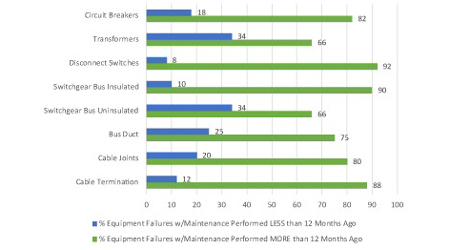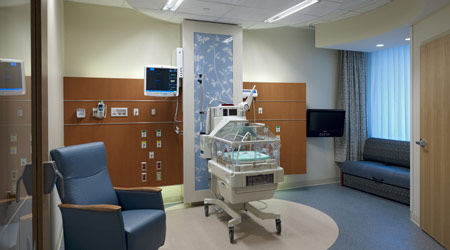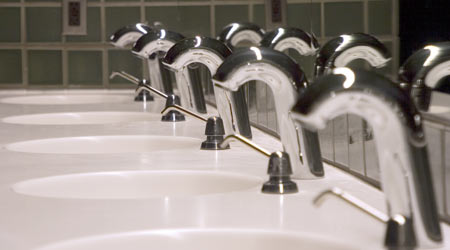
Electrical Equipment Reliability Doesn't Equal Electrical System Reliability
January 12, 2017
Facility managers may be wondering how they can improve electrical reliability. The short answer is to develop and execute a maintenance strategy.
The first step is to get management buy-in…literally. Investing in electrical preventive maintenance is sometimes resisted by management because, like insurance, there is no direct payback. However, the failure of electrical system components is three times higher without maintenance activities — and in some cases more. (See chart from IEEE above.)
NFPA 70B – 2016 defines electrical preventive maintenance as, “a managed program of inspecting, testing, analyzing, and servicing electrical systems and equipment with the purpose of maintaining safe operations and production by reducing or eliminating system interruptions and equipment breakdowns.”
Note the use of the word "system" in the definition. When determining system reliability, it is important to not confuse the reliability of individual electrical components with the reliability of the electrical system as a whole.
Reliability is determined from the combination of failure rates of individual components and the configuration of the power system to which they are applied. Without getting too deep into the mathematics and calculations, electrical reliability is measured by its trouble-free time. For example, if a piece of equipment is designed and intended to continuously operate “X” years and it does, it is 100 percent reliable to “X” years. After that time, if there is an occasional breakdown, the reliability beyond the stated time is less than 100 percent.
Overall system reliability is only as good as its weakest link. Operations personnel can easily be misled if they focus on the reliability statistics of individual components. This false sense of security increases the risk of unplanned downtime. In the following basic illustration, think of each piece of equipment as one in a series, each with its own reliability rating (percent). At first glance, it appears the series, i.e., power system is 90 percent reliable, right? Actually, the reliability for this scenario is: 0.9 x 0.9 x 0.9 x 0.9 = .656 or 66 percent.

Drop the reliability of one device to 70 percent due to lack of maintenance and total system reliability plummets: 0.9 x 0.9 x 0.9 x 0.7 = .51 or 51 percent.
Lowered reliability, especially in the realm of electrical systems, increases the risk of both employee safety and of downtime-related lost business productivity.
Facility managers may be unaware of the current reliability state of their electrical power system unless maintenance and test inventory data on the equipment and components within the system is complete and readily available throughout the equipment’s service life. If documentation is unavailable or outdated, management may consider having a power system assessment performed, which determines the present state of electrical system, its associated equipment, its functionality, and its reliability relative to the present needs of a facility’s functions and operations.
Re-examine (or Develop) the Maintenance Strategy
Maintenance costs can be broken down into two categories: proactive (planned) and reactive (unplanned). Even though reactive maintenance activities typically cost three to four times more, planned maintenance activities are often deferred due to high productivity objectives and tight maintenance budgets. Here are some of the common options:
1. Reactive maintenance addresses equipment or components that have experienced an unexpected breakdown. If a component fails, service personnel are called in to repair. This approach is not recommended for components that support critical processes.
2. Preventive maintenance is time-based. Regularly-scheduled maintenance activities are performed, regardless of the equipment’s condition. Preventive maintenance is more cost-effective than reactive maintenance but, costlier than predictive maintenance.
Predictive or condition-based maintenance is also scheduled, however, the schedule is not based on time intervals. Results from diagnostic evaluations of the equipment determine when maintenance should be performed.
Preventive and predictive strategies focus on individual equipment maintenance (or repair, in the case of reactive maintenance).
3. Reliability-centered maintenance focuses on the operation of the power system as a whole by identifying the functions and failure modes of assets that are most critical. Maintenance tasks are then determined and prioritized to minimize the possibility of failure.
At some point, regardless of the maintenance strategy employed, aging or outdated equipment will need to be replaced. And, if maintenance budgets are tight, it is fairly safe to assume the same about new equipment purchases. A viable solution to improve reliability is to modernize existing switchgear with new low voltage or medium voltage circuit breakers. Utilizing the existing structure and footprint reduces downtime and saves money.
The reliability of power systems varies greatly from site to site and from business to business. Operations teams work with dissimilar quantities and qualities of electrical equipment, support different mission critical processes, and pursue diverse maintenance strategies. Nevertheless, it is prudent to take into account the specific power issues of a site and determine how much maintenance is enough, if maintenance dollars are being spent efficiently, and if the right maintenance is being performed on the right equipment to meet business objectives. Facility managers will also have to evaluate if they should continue to maintain aging/obsolete equipment or modernize to current technology.
This Quick Read was contributed by Charles Alvis, marketing manager, Schneider Electric, and submitted by Naomi Millán, Building Operating Management senior editor. Alvis has extensive experience integrating maintenance, software and field services that return business value. Now with Schneider Electric Field Services he is actively involved in creating innovative approaches to improve services designed to optimize equipment life and reliability.
For more on power system reliability, go to www.facilitiesnet.com/13096bom
Next
Read next on FacilitiesNet













